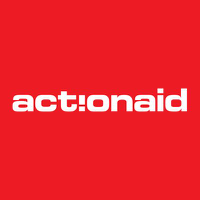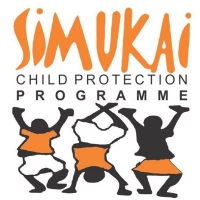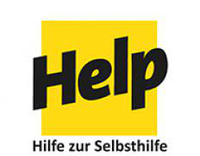Terms of Reference for the Mid-Term Evaluation of the Strategic Partnership Agreement (SPA 2) Project
Consultancy, Research Jobs
- ActionAid Zimbabwe
- Expires 26 Sep 2024
- Harare
- Full Time
Job Description
Duration: Estimated to 30 working days
Starting date: October 2024
Background
ActionAid Zimbabwe is in the third year of implementing a 4-year (2022-2025) Strategic Partnership Agreement 2 project in Binga, Chimanimani, Chipinge and Mbire districts. The project seeks to support youth to know their role and take steps to influence an enabling environment for implementation of feminist and green economic alternatives that will improve their livelihoods and resilience to climate change induced shocks and stresses.
The strategic objectives of the project are:
1.
Young people, especially young women, meaningfully participate in decision making bodies and processes for improved access to well-resourced programmes and public services.
2.
Young people, especially young women, in Binga, Chimanimani, Chipinge and Mbire, advocate for climate financing, policies and alternatives that build their resilience.
3.
Young people, especially young women, in Binga, Chimanimani, Chipinge and Mbire, are resilient to shocks through improved livelihoods, and advocate for policies that promote their right to protection in fragile situations, disasters and protracted crises.
Purpose and scope of the mid-term evaluation
The purpose of the mid-term evaluation is to check if the intervention and expected programme outcome is on track and to make recommendations on how best to meet objectives in the remaining project period. The mid-term evaluation will be used to identify which outputs are being delivered according to the plan, which are being exceeded and whether any activities are falling behind and reasons. It is also important to assess whether the achievements till date are on course to achieve the intended outcome/impact. The mid-term evaluation will also check whether outputs are being delivered in the most efficient and effective way i.e. whether programme management and communication arrangements are efficient, and whether the outputs are likely to lead to intended outcomes or if a different strategy is required. By this, the mid-term evaluation will provide a view on whether the intended objectives and activities are still relevant (e.g. as a result of changes in the context or availability of new information). This is also a good opportunity to test whether current monitoring and evaluation arrangements will be adequate to demonstrate results by the end of the project. It will test the veracity of the Results Framework and the Logical Framework to inform the programme implementation team on the status of planned milestones based on observed results.
This mid-term evaluation will be restricted to the implementing districts and will not be expected to measure intended project impact. However, by understanding the project status, it is expected that potential impacts will be highlighted. Key to this, the mid-term evaluation will be as participatory as possible with key partners playing key roles to ensure a high degree of ownership, accountability and
Terms of Reference for the Mid-Term Evaluation of the Strategic Partnership Agreement (SPA 2) Project
2
transparency. The TORs are focused on providing information about the key questions needed to support interventions for the remaining period. However, key evaluation criteria will cover relevance, effectiveness, efficiency, co-ordination and linkages and sustainability.
Duties and Responsibilities
The specific objectives of the mid-term evaluation
The specific objectives of this mid-term evaluation are:
•
Assess the extent to which the SPA 2 project objectives and core activities are relevant to the targeted rights holders including the coherence in line with climate justice, resilience disaster risk management issues in the targeted communities and its influence on local and national policies. This will be done by assessing the level of achievement of the expected results as outlined in the logical framework and results framework
•
Assess the approach taken by the project and the extent to which the activities are delivering attainment of the intended objectives of the SPA 2 project, the alignment of the activities with the SPA 2 results.
•
Assess the level of efficiency of the SPA 2 project compared to the inputs.
•
Document project challenges, lessons learnt and key recommendations for project improvement.
•
Identify any innovations used by the project in achievement of results
Key Evaluation Questions
The evaluator shall examine the following key issues:
1. Relevance and strategic fit
•
Is the project relevant to the felt needs of the rights holders?
•
How well the project complements and fits with other ongoing programmes and projects in the country and at the local level.
•
What links are established so far with other activities of the other CSOs, UN agencies or non-UN international development aid organizations at local level?
2. Validity of design
•
Has the design clearly defined outcomes, outputs and performance indicators with baselines and targets?
•
Was the project design realistic?
•
Did the project design include an integrated and appropriate strategy for sustainability?
•
Was the implementation approach valid and realistic?
•
Has the project adequately considered the risks of the project?
•
Has the project addressed gender issues in the project document?
3. Project effectiveness
•
Based on project monitoring data and achievement of indicator targets, to what extent has each of the expected project objectives and their related outputs been achieved according to the work plan or are likely to be achieved? Please disaggregate this analysis by geographic area and project component.
3
•
Has the project successfully built or strengthened an enabling environment (systems, policies, people's attitudes, etc.)?
•
Which have been the main contributing and challenging factors towards project’s success in attaining its targets?
•
What, if any, unintended results of the project have been identified or perceived?
4. Efficiency of resource use
•
How efficiently have resources (human resources, time, expertise, funds etc.) been allocated and used to provide the necessary support and to achieve the broader project objectives?
•
To what extent are the project’s activities/operations in line with the schedule of activities as defined by the project team and original (and subsequent) work plans?
•
To what extent are the disbursements and project expenditures in line with expected budgetary plans? Why?
5. Effectiveness of management arrangements
•
Are the available technical and financial resources adequate to fulfil the project plans? If not, what other kind of resources may be required?
•
Is the management and governance arrangement of the project adequate? Is there a clear understanding of roles and responsibilities by all parties involved?
•
How effectively has the project management and relevant stakeholders monitored project performance and results? Is a monitoring & evaluation system in place and how effective is it? Is relevant information systematically collected and collated? Is the data disaggregated by sex (and by other relevant characteristics if relevant)?
•
Has the project created good relationship and cooperation with relevant national, regional and local level government authorities and other relevant stakeholders to implement the project including the donor to achieve project results and address bottle necks?
•
How the local policy influencing, and advocacy strategies are aligned to the national policy influencing.
•
Is the project receiving adequate administrative, technical and - if needed - policy support from the AAZ office, specialists in the field, technical partner, Global Platform, Gold and People for Change including exploring the relationship between AAZ and partners.
•
Discuss the key actions that should be included into SPA III programming.
6. Impact orientation and sustainability
•
To what extent have the rights holders benefited from the project activities?
•
Has the project changed their lives in any meaningful way?
•
Is the project strategy and project management steering towards impact and sustainability?
•
Has the project started building the capacity of people and national institutions or strengthened an enabling environment (laws, systems, policies, people's skills, attitudes etc.)?
•
Assess whether project activities are sustainable and identify steps that can be taken to enhance the sustainability of project components and objectives
7. Lessons learned
•
What good practices can be learned from the project that can be applied in the next phase and to similar future projects?
•
What should have been different, and should be avoided in the next phase of the project
Qualifications and Experience
Qualifications The potential consultants/consulting team should be composed of members with the following proposed skills blend:
1.
Proven track record in carrying out feminist research or evaluation in the Global South
2.
A Master’s degree or higher in International/Rural Development, Climate Change, or any social science.
3.
MEL expertise with good analytical understanding of development programs
4.
Applying participatory methodologies to evaluations
5.
Five years’ experience in Resilience building programming





